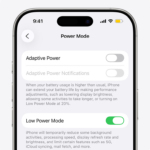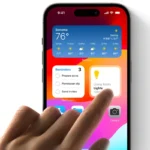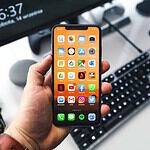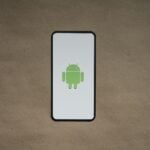Wireless charging has become a staple feature in smartphones today and Apple’s iPhones are no exception. This technology allows users to charge their devices without the need for cables by simply placing them on a charging pad or stand. Since its introduction to the iPhone lineup, wireless charging has seen significant improvements in speed and convenience.
Apple first introduced wireless charging with the iPhone 8 and iPhone 8 Plus, signaling a shift in how users power their devices. Today, every new iPhone model supports wireless charging, reflecting Apple’s commitment to this technology. With the advent of MagSafe in later models, Apple enhanced the wireless charging experience by improving the alignment and efficiency of the charging process.
iPhones That Support Wireless Charging
Apple first introduced wireless charging in 2017 with the release of the iPhone 8 and iPhone X. Since then, every new iPhone has supported wireless charging, and Apple has continued to improve the technology with Qi, MagSafe, and now Qi2 standards.
iPhone 17 Series (2025)
- iPhone 17, iPhone 17 Plus, iPhone 17 Pro, iPhone 17 Pro Max
All models in the iPhone 17 lineup support Qi2 wireless charging and MagSafe, providing faster, more efficient charging with better magnetic alignment.
iPhone 16 Series (2024)
- iPhone 16, 16 Plus, 16 Pro, 16 Pro Max
Supports Qi2 and MagSafe charging.
iPhone 15 Series (2023)
- iPhone 15, 15 Plus, 15 Pro, 15 Pro Max
Supports Qi2 and MagSafe charging.
iPhone 14 Series (2022)
- iPhone 14, 14 Plus, 14 Pro, 14 Pro Max
Supports MagSafe and Qi wireless charging.
iPhone 13 Series (2021)
- iPhone 13, 13 mini, 13 Pro, 13 Pro Max
Supports MagSafe and Qi wireless charging.
iPhone 12 Series (2020)
- iPhone 12, 12 mini, 12 Pro, 12 Pro Max
First iPhones to feature MagSafe magnetic wireless charging.
iPhone 11 Series (2019)
- iPhone 11, 11 Pro, 11 Pro Max
Supports standard Qi wireless charging (no MagSafe yet).
iPhone XS Series (2018)
- iPhone XS, XS Max, XR
Supports Qi wireless charging.
iPhone 8 Series & iPhone X (2017)
- iPhone 8, 8 Plus, iPhone X
First iPhones to support Qi wireless charging.
❌ iPhones Without Wireless Charging
Older iPhones before the iPhone 8 (such as iPhone 7, 6s, SE 1st gen, etc.) do not support wireless charging. These models require wired Lightning charging.
🔋 Wireless Charging Standards on iPhone
- Qi Wireless Charging: Introduced with iPhone 8 & X.
- MagSafe (2020): Added with iPhone 12, uses magnets for precise alignment.
- Qi2 (2023 onward): Adopted starting with iPhone 15, offering improved efficiency and speed.
✅ In short: Every iPhone from the iPhone 8 (2017) up to the iPhone 17 series (2025) supports wireless charging.
Key Takeaways
- iPhones support wireless charging, improving how users charge their devices.
- Apple first integrated wireless charging in the iPhone 8 series.
- All current iPhone models offer wireless charging, with MagSafe enhancing the experience in newer models.
Evolution of Wireless Charging in iPhones
Wireless charging has transformed how users recharge their iPhone batteries. This feature allows charging without cords, making it convenient and innovative. Apple’s adoption of this technology began with the iPhone 8, and it has progressed significantly since then.
Early Adoption and Qi Standard
Apple introduced wireless charging with the iPhone 8 and iPhone 8 Plus models. They integrated the Qi (pronounced “chee”) wireless charging standard. This technology uses induction between a charging pad and a compatible device to transfer energy. The iPhone X continued this feature, building on the foundation set by the iPhone 8. With Qi standard support, these models work with a range of Qi-certified chargers available in the market.
Advancements with MagSafe
With the iPhone 12, Apple introduced MagSafe technology. MagSafe improves wireless charging by using a ring of magnets to perfectly align the iPhone with the MagSafe charger. This ensures a strong connection for a more consistent charging experience. The technology also allows a variety of MagSafe accessories to snap onto the back of the iPhone, including wallets and cases. MagSafe chargers are designed to deliver up to 15W of power to the iPhone, making wireless charging faster and more efficient. This tech also extends beyond phones to accessories like the Apple Watch, showcasing Apple’s broader commitment to magnetic charging solutions.
Compatibility and Considerations for Wireless Charging
Understanding which iPhone models are compatible with wireless charging and the considerations for a seamless charging experience is critical for users.
Compatible iPhone Models
iPhones that support wireless charging began with the iPhone 8 and 8 Plus. Here is a list of models that offer this feature:
- iPhone 8 and iPhone 8 Plus
- iPhone X
- iPhone XR
- iPhone XS and iPhone XS Max
- iPhone 11, iPhone 11 Pro, and iPhone 11 Pro Max
- iPhone SE (2nd generation and later)
- iPhone 12 and its variations
- iPhone 13 series
- iPhone 14 lineup
These devices employ Qi wireless charging technology for power transfer via magnetic induction.
Charging Accessories and Cases
For an effective charge, users need a Qi-certified charger. These come in various forms like mats, stands, and docks. Notable brands include Belkin, Mophie, and Anker. Some accessories are Apple-certified with integrated magnetic strips to align with iPhones easily.
When selecting a case, it should be compatible with wireless charging. Battery cases or those that are especially thick might hinder charging efficiency. Cases designed with wireless charging in mind often feature built-in magnets or are made of materials that do not obstruct the charge.
Factors Affecting Wireless Charging Experience
Several factors influence the wireless charging experience. The presence and positioning of coils and magnets in both the charger and the device are crucial for efficient charging. Fast wireless charging is available on newer models but requires compatible accessories.
Though wireless chargers eliminate the need for a cable and charging port, interference from metal objects or other magnetic strips should be avoided. Always ensure the device is properly aligned on the charger for the best results. Some newer models support reverse wireless charging, which allows smartphones to charge other devices like AirPods.
Wireless charging is not as fast as using a cable but it offers convenience. Users can expect the charging times to vary based on the power output of the wireless charger used.







